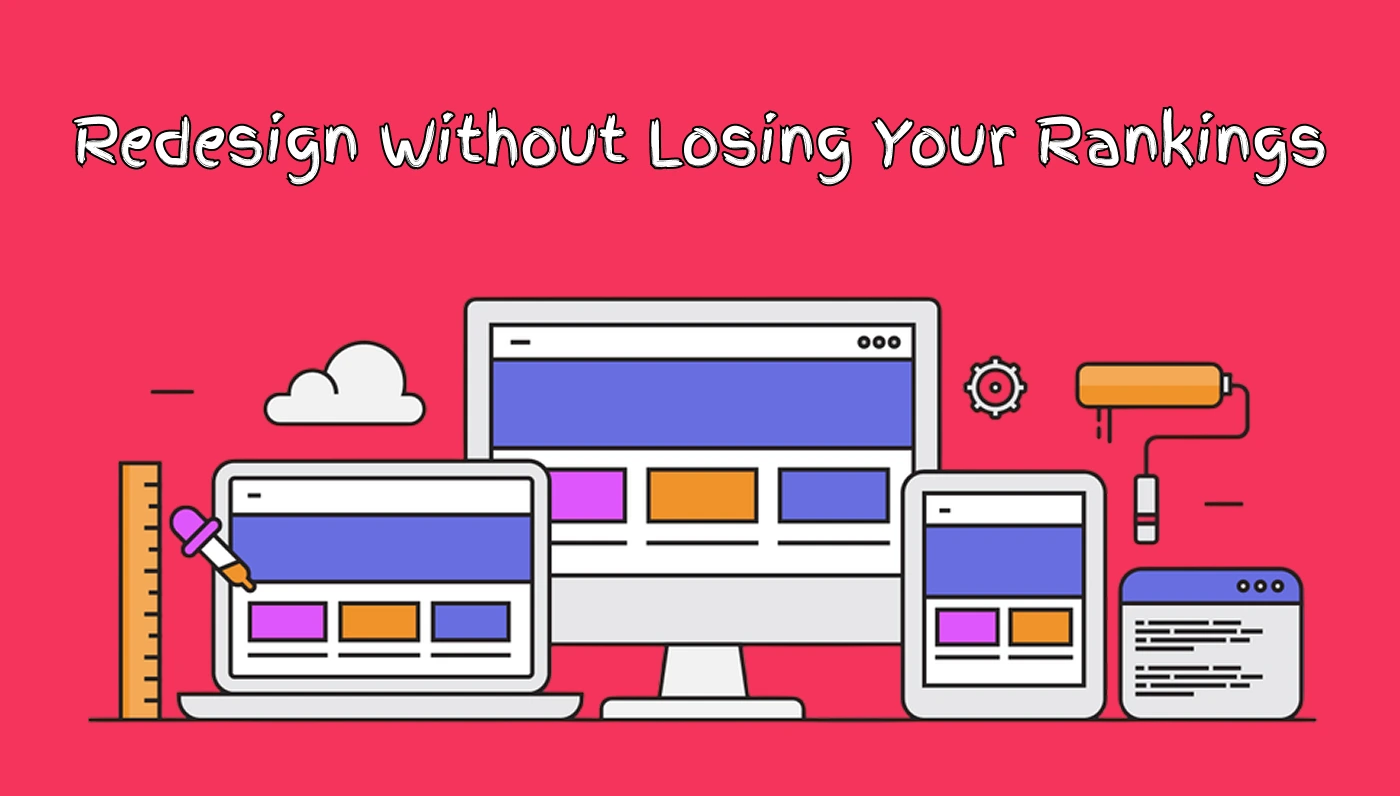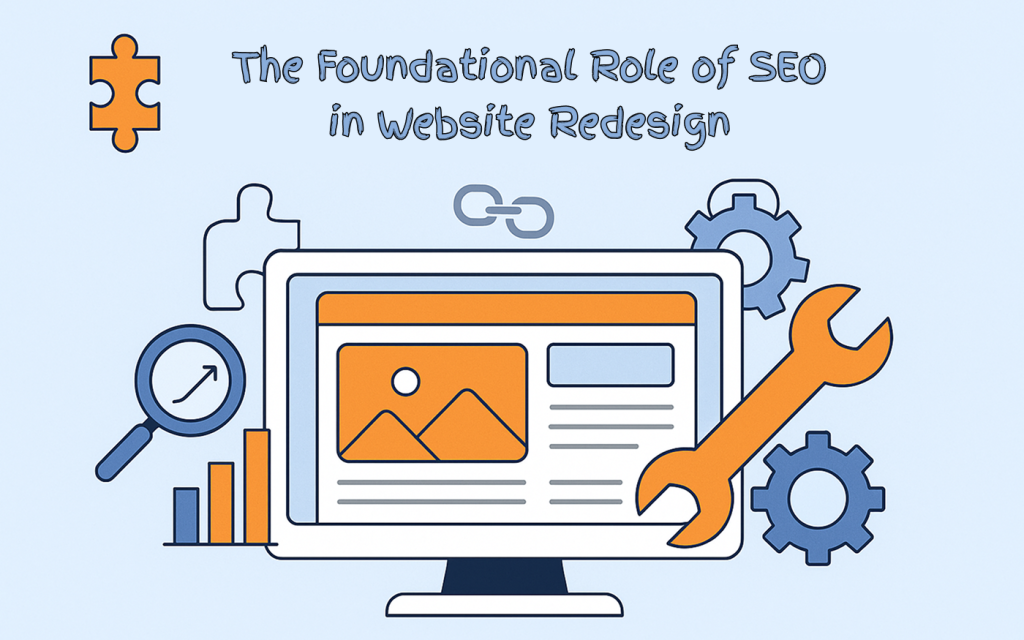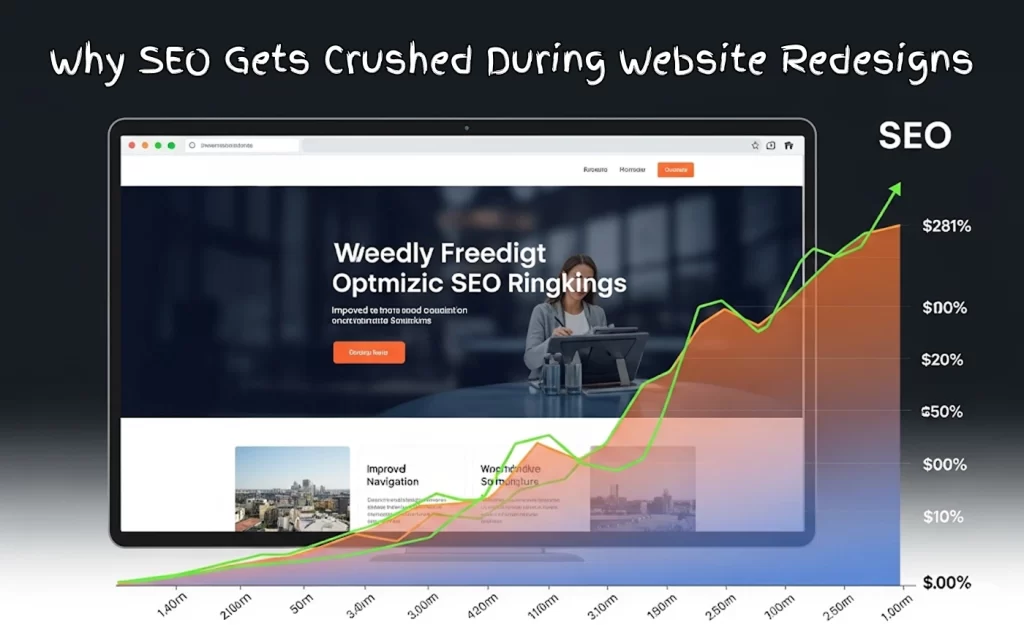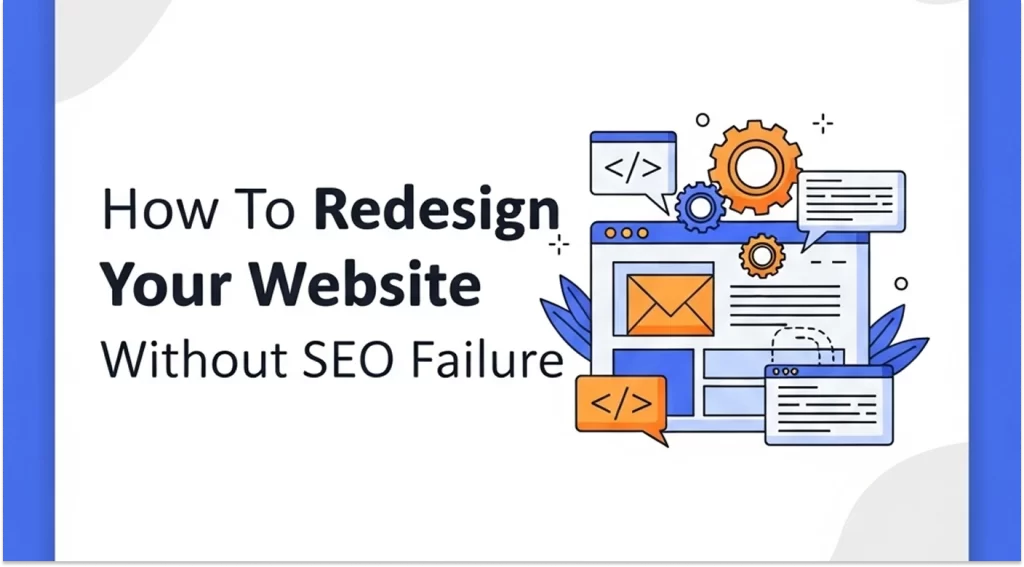Avoid SEO Failures While Redesigning Your Website

If you have clicked on this article, the phrase “SEO failure” might have captured your attention, and it is not even the least bit exaggerated. In the world of digital marketing, website redesign is an inevitable part of the process. Every few years, you have to roll up your sleeves again and get it done.
But a website redesign that does not take SEO into account can be disastrous. Whether you are planning a complete website relaunch or just a few changes, you probably have solid reasons behind it, like improving UI and UX, boosting conversion goals, or refreshing your brand perception.
But while doing all this, one thing that often gets left behind is Search Engine Optimization.
SEO is often overlooked during a website redesign, which can lead to unintended consequences. After updating your site, you may notice a drop in your search rankings. Ignoring SEO during this process is like throwing water into a hot, well-oiled pan; it can cause unexpected damage.
That is why it is crucial to understand the profound connection between SEO and redesign. You need to plan it right from the beginning. So, the site you launch is not only stunning but also visible and search engine-friendly.

The Critical Link Between SEO and Website Redesign
Website redesigning often includes changes to your URL structure, layout, and content. And while that fresh new look might feel exciting, it’s important to understand how these changes actually play out and how they both are interconnected.
Search Engine Ranking
Redesigning your website means changes in mobile responsiveness, user experience, site speed, and how relevant your content feels. Disruption in any of these areas can lead to reduced visibility and lost sales.
User Experience
Redesigning your website is often about making it more user-friendly. Better experience means visitors stay longer, explore more, and feel more confident reaching out.
SEO-Driven Approach
Making your website look better and easier to use isn’t just about visuals — it plays a huge role in SEO too. A clean design with smooth navigation helps search engines understand your site better and keeps visitors engaged for longer.

Why SEO Gets Crushed During Website Redesigns
Here are a few common culprits that often go unnoticed and create havoc post-launch:
Technical Issues
Incorrect 301 Redirects
One of the most damaging mistakes is failing to set up proper 301 redirects when moving from old URLs to new ones. This can break the flow of link equity and make users (and search engines) land on error pages.
Site Architecture Changes
Major shifts in your site’s structure, navigation, or URLs can confuse search engines. If not mapped out properly, it becomes difficult for bots to crawl and index your site efficiently.
Mobile Usability and Page Speed
If the redesign negatively impacts mobile responsiveness or slows down the site, you are in trouble. Google rewards sites with a seamless user experience and punishes poorly designed ones.
Blocking Search Engine Crawlers
Sometimes, in the rush of going live, developers accidentally block crawlers using the robots.txt file. If this happens, your site won’t even make it to the search results.
Content Issues
Content Rewriting Without SEO in Mind
Revamping content on high-performing pages without preserving core keywords can erase all the SEO value those pages had built.
Meta Tags and Descriptions Get Ignored
Often during redesign, meta titles and descriptions are either removed or forgotten. This affects how your pages appear on search results and can hurt click-through rates.
Keyword Optimization Gets Overlooked
Fresh content is good, but if it is not aligned with your keyword strategy, it won’t rank or attract the right audience.
Other Critical Factors
Backlinks Not Redirected
If you have valuable backlinks pointing to old pages that are not redirected correctly, you’re losing authority and traffic instantly.
Google Analytics Misconfigured
Launching your new website without properly configuring Google Analytics means you lose the ability to track performance and make data-driven decisions.

How To Redesign Your Website Without SEO Failure
Intact The Old URL Structure
When we talk about URL structure, we’re talking about the road map of your website. Unless you have a very strong reason to change it, your safest bet is to stick with your existing structure. It helps search engines recognize your site without confusion and protects your existing rankings.
Also, make sure to update your sitemap in Google Search Console so that search engines can quickly understand the changes you’ve made.
Let’s say your URL was something like:
https://seobooklab.com/seo-audit-services
Now, imagine you change it to something entirely different without proper planning. That can lead to:
- Orphan pages — pages that exist but are not linked from anywhere
- Broken backlinks — valuable links from other sites pointing to pages that no longer exist
- Redirect issues — links pointing to pages that cannot be accessed
- Broken internal links — navigation errors within your website.
Confirm if the Staging Site Is Mobile-Friendly and Follows Core Web Vitals
Before launching your redesigned website, ensure the staging environment is fully mobile-friendly and meets Core Web Vitals standards. A redesign often impacts critical areas such as responsiveness and loading speed, which can affect both user experience and search engine performance. Common issues like improperly scaled layouts, excessive animations, or bloated code can undermine these benchmarks.
Request your developers to run dedicated mobile responsiveness and Core Web Vitals assessments on key template pages ahead of launch. Tools like Google Lighthouse are useful for evaluating these metrics, even on password-protected staging sites.
And if you’re using an advanced Ahrefs plan, you can perform several of these checks independently for added assurance.
Keep a Backup Copy of the Old Site
It might feel unnecessary, like, what’s the point of holding onto the old when you’re going live with something fresh? But having a backup serves as your safety net. If anything goes wrong, you can quickly restore the original version without panic.
Make sure you communicate with your developers to create a proper backup plan as their fallback strategy. And don’t stop there, create a backup yourself using your hosting provider’s tools or plugins. This dual layer of security gives you multiple levels of protection in case anything goes sideways.
Keep Crucial Organic Pages
Website redesign often comes with content pruning, which means cleaning up outdated or underperforming pages to enhance user experience. No matter what you update or remove, make sure not to make any significant changes to the pages already ranking well. Use tools like Ahrefs Site Explorer to spot the high-performing pages that are driving organic traffic.
These pages are pure gold. And if you are still planning to make changes to them, treat them carefully. Do not touch core elements like target keywords, meta titles, or meta descriptions. These are the backbone of your rankings.
Run Site Audit Before And After Launching The Website
Doing an audit before launch is like checking your blueprint before building it helps identify existing issues related to design, layout, and user experience. But the job doesn’t end there.
A post-launch audit is just as important. It uncovers issues that might have slipped through during the redesign, things like broken links, pages not being indexed, or website accessibility, both across HTTP and HTTPS versions.
Now here’s the smart move: compare the results from both audits side by side. This will help you catch any discrepancies and fix them fast. Start by prioritizing critical pages, because keeping your most important content optimized is non-negotiable.
Final Words
While a website redesign may sound like a great idea to begin with, you need to be careful not to hurt the backlink equity and traffic you’ve earned so far. At SEOBookLab, we take a different approach when redesigning your website. We aim for maximum efficiency by prioritizing your resources and time.
With our deep knowledge, our web designers and backend developers follow a clear checklist to avoid common pitfalls and manage your website redesign from scratch, ensuring we deliver outstanding results.

